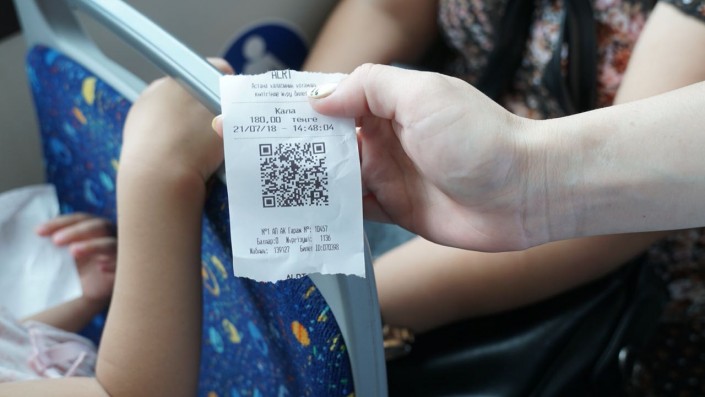ASTANA – Capital bus passengers are now wielding transport cards. Differentiated fares and new enter-and-exit rules began operating July 21.
For urban routes, the non-cash fare is 90 tenge (US$0.26); cash fare, 180 tenge (US$0.52). The non-cash fare for express routes is 180 tenge (US$0.52); the cash fare, 250 tenge (US$0.72). For suburban routes, the non-cash fare is 8 tenge (US$0.02) per kilometre; the cash fare, approximately 12 tenge (US$0.03).
Children’s fares on urban routes are 40 tenge (US$0.11) when paying by card, 90 tenge (US$0.26) with cash. For express routes, the fee is 90 tenge (US$0.26) by card, 125 tenge (US$0.36) with cash.
The fare changes will not affect the category of citizens including Great Patriotic War veterans, pensioners, mothers and families with many children and individuals with disabilities and one of their parents or guardians.
Passengers receive a free transfer within an hour of validating their transport card. Those evading payment are charged 4,810 tenge (US$13.80).
“Having introduced differentiated fares, we will now conduct an analysis and come to a better understanding of the suitability of the current fares,” said Astana Light Rail Transport (LRT) Chairperson Bekmyrza Igenberdinov. “We will also determine to what extent the Akimat (city administration) may garner subsidies, so as to not increase the fares further.”
Cards may be purchased for 400 tenge (US$1.15) at 30 terminals throughout the city and refilled at designated offices and terminals, QIWI terminals and on the Transcard website. In September, the options of bank card and SMS message payments will be introduced.
At the beginning of the year, five percent of passengers were transport card holders. Now, they constitute more than 87 percent. In excess of 200,000 cards were purchased in July alone.
“The city is ready for differentiated fares, as may be judged by the increased sales of transport cards,” he added.
To accommodate the system, passengers must enter through the front door to validate their cards. Senior citizens and those with disabilities, wheelchairs or luggage are exempt and may enter via the middle doors using the lowered platform. Passengers may exit through any door.
“Before introducing the new rules, international best practices were taken into consideration. In many large metropolitan areas, the front door functions as the entrance in city shuttle busses,” said Igenberdinov.
Passengers, conductors and drivers alike are becoming accustomed to the new system. To help passengers adjust to the procedures, bus conductors now consult on the payment system.
Introducing differentiated fares resulted in some drivers resisting the newly prescribed programme. A driver shortage has ensued, with only 80 percent of busses currently operating and causing increased intervals between runs.
As part of an accompanying incentive scheme, bus driver bonuses will be conditional on the number of card validations on a given route. Financial rewards may also be provided in the absence of complaints and schedule violations.



